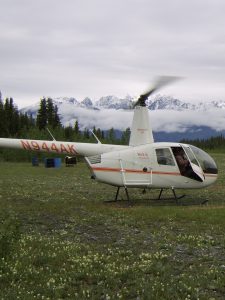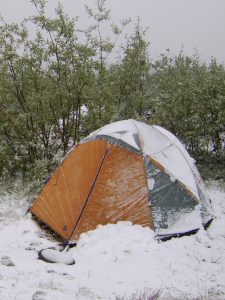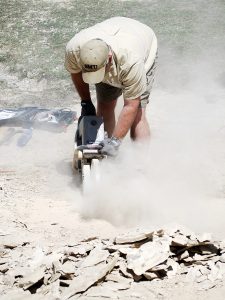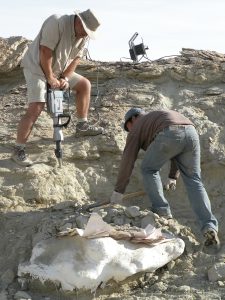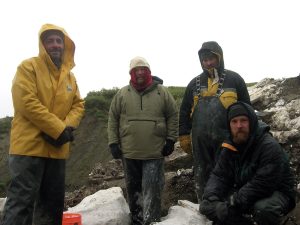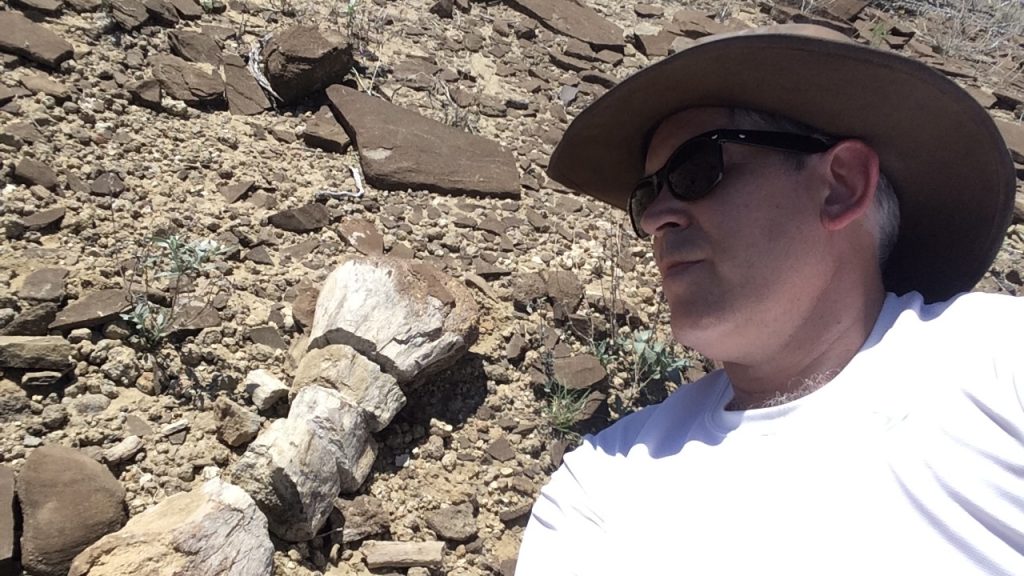
Excavations in Extremes
By Thomas Adams, PhD, Chief Curator and Vice President of Research, Witte Museum
As you visit Antarctic Dinosaurs, you’ll learn about the rough conditions paleontologists can face. While going on an expedition to hunt for fossils may sound glamorous, it can involve a lot of hard, dirty and backbreaking work—sometimes in extreme environments. Like the paleontologists in Antarctica, I have had some memorable experiences excavating fossils, from the Arctic of Alaska to the Gobi Desert in Mongolia to the badlands of Texas.
To find fossils, you first need to go to places where the right kinds of rocks of the right geologic age are exposed at the surface. This usually means going to distant areas with very rugged and barren landscapes. Getting there can be a challenge. I’ve had to use 4-wheel drive where there were no roads and have floated for days downriver in a rubber boat. I’ve even been dropped off by helicopter in remote regions! All in the hope of finding fossils.
Once you get there, working in these isolated locations can be strenuous and sometimes hazardous. You may need to hike miles across rocky terrain, through open deserts, up slippery slopes and in areas where you may encounter wild animals—all while carrying field gear and heavy objects.
Climate and weather are a big part of what creates these tough working conditions, so it’s important to be prepared. Depending on where you are going, it can be hot and arid or cold and wet. Having the right clothing can mean the difference between having a bad trip or a successful one. As the saying goes “there’s no such thing as bad weather, just poor clothing choices.”
When you do find fossils, it can take a day or weeks to excavate them. A lot of equipment is needed to excavate fossils. A paleontologist’s field gear usually includes small shovels, chisels, rock hammers and brushes to remove the rock surrounding a fossil. If there’s a lot of rock above the fossil, we may need to use rock saws or jackhammers to remove the overlying rock.
Once a fossil has been exposed, it is normally encased in a plaster jacket, which holds the fossil together and protects it in transit. The block containing the fossil is covered first with paper towels or toilet paper, to prevent the plaster from sticking to specimens, and then covered in strips of burlap soaked in plaster. The final plaster jacket can sometimes be large and too heavy to pick it up and carry out of the field. In the Arctic of Alaska, we used helicopters to sling the final jackets back to base camp.
So, is all that hard work really worth it? Absolutely! When you are rewarded with spectacular and scientifically important fossils, it makes all that effort worthwhile. These fossils are the only evidence we have for the history of life, and every new fossil we find provides another clue to understanding that history.
Witte Museum Members Magazine | Spring 2023
